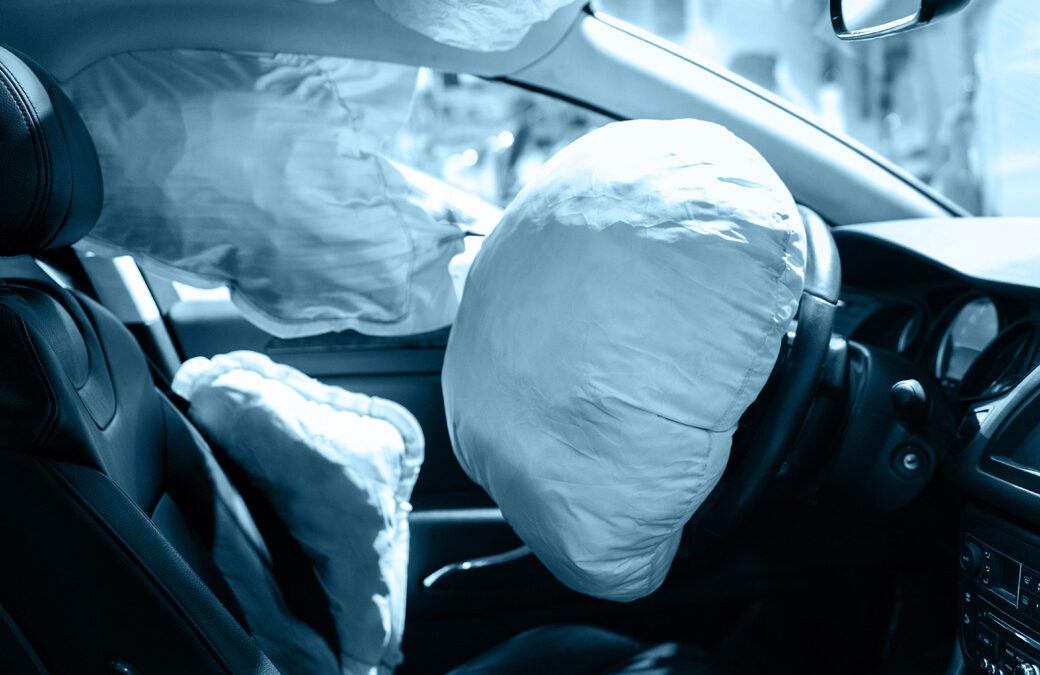Setareh Law
August 12, 2025
Modern vehicles come equipped with an impressive array of safety features designed to prevent accidents and minimize injuries when collisions occur. These technological advancements don’t just protect you physically—they can significantly influence the outcome of personal injury claims following a car accident. Understanding how these safety features affect liability and compensation can help strengthen your case if you’ve been injured due to another driver’s negligence.
At Setareh Law, our personal injury attorneys stay current with automotive safety technology and its legal implications. We understand how to leverage this information when building strong cases for our clients throughout California. Our knowledge of how safety features impact accident claims helps us secure the maximum compensation our clients deserve.
Advanced Driver Assistance Systems (ADAS)
Today’s vehicles often include sophisticated ADAS technologies that can prevent accidents or reduce their severity. These systems can provide crucial evidence in personal injury claims.
Automatic Emergency Braking
Automatic emergency braking systems use sensors to detect potential collisions and automatically apply the brakes when the driver fails to respond. In accident cases, these systems create valuable data records that can establish:
- Whether a driver had functioning emergency braking technology
- If the system activated before the collision
- How much time elapsed between the system’s warning and impact
- Whether the driver attempted to override the system
If a driver disabled their automatic braking system or ignored repeated warnings, this information can strengthen a negligence claim. Our attorneys work with automotive experts to access and interpret this data, providing compelling evidence of the other driver’s responsibility.
Lane Departure Warning and Assistance
Lane departure systems alert drivers when they drift from their lane without signaling and may actively steer the vehicle back into position. These systems are particularly relevant in cases involving:
- Side-swipe collisions
- Head-on crashes on undivided highways
- Run-off-road accidents
When investigating your accident, we determine whether the other driver’s vehicle had this technology, if it was functioning properly, and whether the driver repeatedly ignored or disabled warnings. This evidence can establish a pattern of negligent driving behavior.
Event Data Recorders (EDRs)
Most modern vehicles contain event data recorders—sometimes called “black boxes”—that capture critical information seconds before, during, and after a collision. This data can transform your personal injury claim.
Speed and Acceleration Records
EDRs typically record vehicle speed, acceleration, braking, and steering inputs in the moments surrounding a crash. This information helps establish:
- Whether a driver was speeding
- If they braked before impact
- How they responded to emergency situations
- Whether they accelerated inappropriately
When another driver claims they weren’t speeding or that they tried to avoid the collision, EDR data often tells a different story. Our attorneys know how to legally obtain and properly analyze this crucial evidence before it can be erased or overwritten.
Seatbelt Usage Documentation
EDRs also record whether seatbelts were fastened at the time of impact. This information affects both liability and compensation in several ways:
- It can counter claims that injuries resulted from failure to wear seatbelts
- It may demonstrate a driver’s general disregard for safety
- It helps establish the connection between specific injuries and the accident
In California, failure to wear a seatbelt can sometimes affect compensation under comparative negligence principles. We ensure this evidence is properly contextualized to protect your right to fair compensation.
How Safety Feature Evidence Strengthens Your Claim
The data from modern vehicle safety systems provides objective evidence that’s difficult for insurance companies to dispute. Our attorneys leverage this information throughout the claims process.
Establishing Clear Liability
Safety technology data often resolves conflicting accounts of how an accident occurred. When the other driver claims you were at fault, evidence from their vehicle’s safety systems may tell a different story:
- Forward collision warnings that activated seconds before impact
- Lane departure alerts that the driver repeatedly ignored
- Stability control interventions indicating excessive speed
We work with accident reconstruction specialists who can interpret this data alongside physical evidence from the scene. This comprehensive approach helps establish the other driver’s negligence beyond reasonable doubt.
Countering Comparative Negligence Arguments
Insurance companies frequently argue that you share responsibility for your injuries to reduce your compensation. Safety feature data helps counter these arguments by showing:
- Your safety systems were active and functioning
- You responded appropriately to warnings
- The other driver ignored or disabled critical safety features
Under California’s comparative negligence laws, minimizing your assigned percentage of fault directly increases your compensation. Our experience with technological evidence helps protect you from unfair blame.
Contact Our Personal Injury Attorneys Today
If you’ve been injured in a car accident in California, the data from modern safety features may provide powerful evidence for your claim. At Setareh Law, our attorneys understand how to access, interpret, and effectively present this technological evidence to maximize your compensation. Our multilingual team has recovered millions for injured clients and maintains a 98% success rate because we leave no stone unturned in building the strongest possible case.
Don’t let insurance companies downplay the value of your claim or shift blame unfairly to you. Contact our experienced personal injury attorneys today at (310) 659-1826 or through our contact form for a free consultation about your case.


